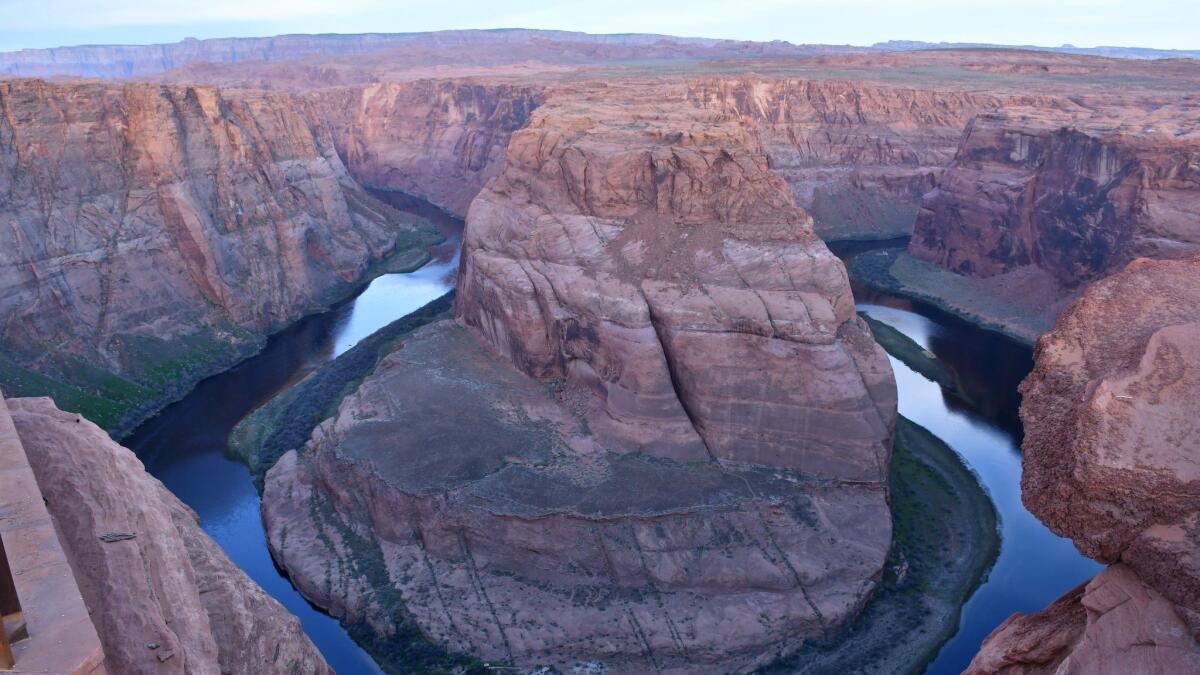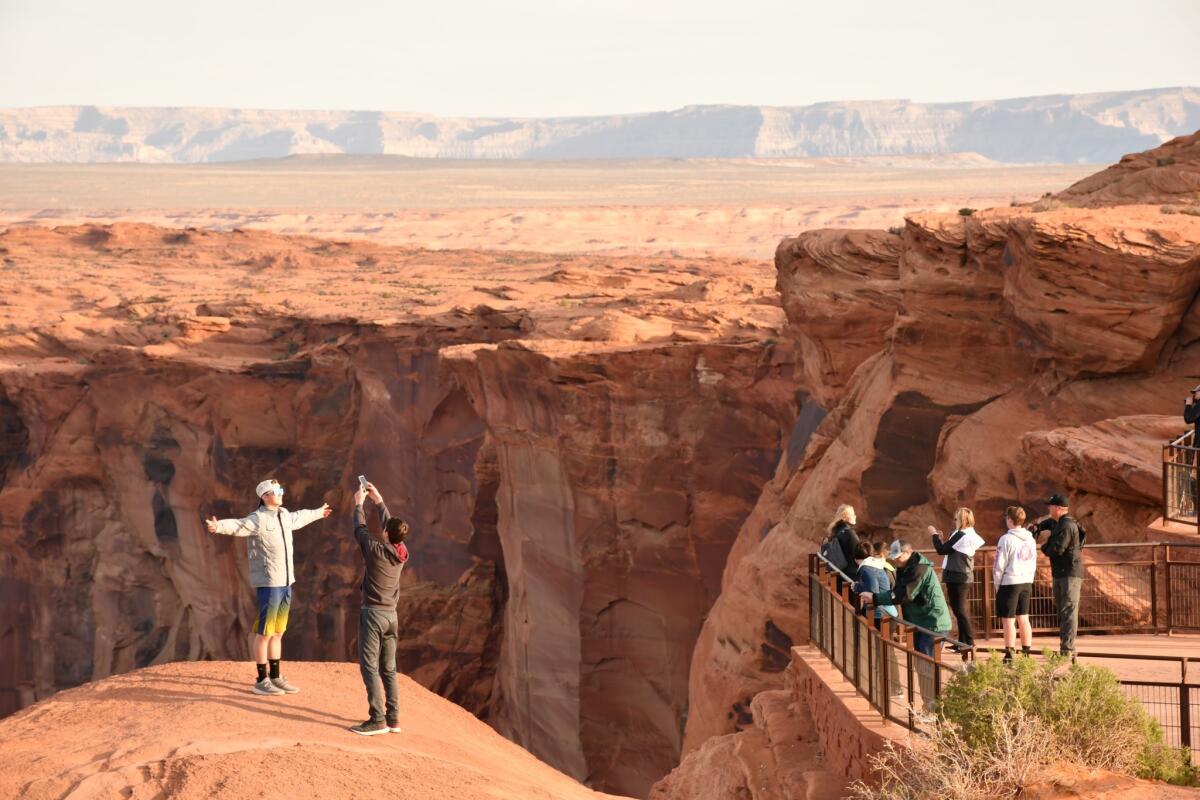This amazing Arizona view is easier to get to, but now you have to pay to park

- Share via
Horseshoe Bend, Ariz., has offered astonishing views for centuries. It’s where the Colorado River makes a 270-degree turn at the bottom of a 700-foot-deep canyon.
Yet only recently has the site, northeast of Grand Canyon National Park and five miles south of Page, Ariz., along U.S. 89, become an Instagram star.
That status has brought crowds and safety worries and now new infrastructure and parking fees from the National Park Service and the city of Page.
Prompted by a surge in tourists and two accidental deaths and two suicides since April 2018, the agencies have taken several steps to improve safety at the rustic site.
On April 18, the park service and city opened a parking lot and a quarter-mile trail segment leading to the canyon edge. The new parking fee: $10 per car.
In summer 2018, the agencies completed a viewing platform at the canyon rim with about 50 feet of railing, a notable change from previously, when visitors parked (free) in a gravel lot near Milepost 545, trudged up a sandy path for about half a mile, then approached the clifftop on their own, sometimes clinging to the sandstone and peeking over.

A second phase of the parking lot project is due to be completed in May. Construction continues on the trail from the parking lot to the canyon rim, a distance of about three-quarters of a mile that will include two shade shelters and restroom improvements.
When complete, the trail will comply with the Americans with Disabilities Act, making the site accessible to wheelchair users.
Most of the clifftop remains unfenced, which makes it potentially dangerous — especially for those seeking dramatic selfies and for parents with young children.
The canyon and viewing area are part of Glen Canyon National Recreation Area, managed by the National Park Service. The parking area is owned and operated by the city of Page.
Page’s greatest claim to fame remains Lake Powell, the reservoir created by Glen Canyon Dam along the Colorado River. But the town (population about 7,500), which neighbors Navajo land and the Utah state line, is close to several other increasingly popular attractions, including Antelope Canyon, where Navajo guides lead visitors through otherworldly slot canyons.
Follow Reynolds on Twitter: @MrCSReynolds
More to Read
Sign up for The Wild
We’ll help you find the best places to hike, bike and run, as well as the perfect silent spots for meditation and yoga.
You may occasionally receive promotional content from the Los Angeles Times.







